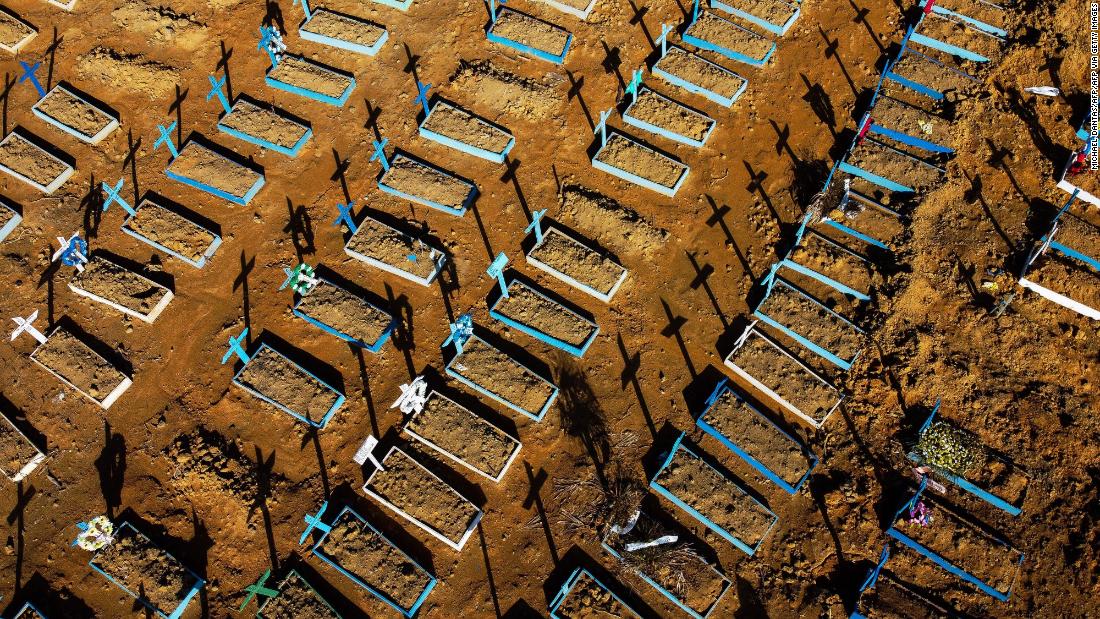
The head of the Pan American Health Organization (PAHO), Dr. Carissa Etienne, said this week: “The Americas region is clearly the current epicenter of the Covid-19 pandemic.”
There are many reasons for the enormous impact of Covid-19 in Latin America: high levels of inequality, the large “gray” economy of informal workers, the lack of sanitation in crowded urban slums, and the slow and uneven responses of governments.
Alejandro Gaviria, a former Colombian health minister, told CNN: “Latin America is very heterogeneous. In some cities, the health infrastructure is similar to that found in developed countries; in rural areas, infrastructure is poor in general. It’s like having Europe and Africa on the same continent. “
Latin American states have had dramatically different experiences with Covid-19. Uruguay, which has a well-funded public health system, embarked on an aggressive monitoring and testing program when the pandemic hit. Despite a change of government in the midst of the crisis, it has had a consistent policy on the blockade. Almost 20% of the population downloaded a government application with guidance on the virus.
Paraguay, which is much poorer than Uruguay, appears to have benefited from an early closure. It also imposed quarantine measures for people who enter the country from Brazil, the epicenter of infections in Latin America.
Crowded living conditions in the poorest urban areas, where basic hygiene and social distancing are almost impossible, threaten the region with a growing wave of infections. As Dr. Marcos Espinal, head of PAHO’s Department of Communicable Diseases and Health Analysis, told CNN: “In the neighborhoods of Lima it will be very difficult to make social distancing.”
Espinal pointed out that in some countries only a third of the population has a refrigerator, which means that people must buy on a daily basis.
Low investment
Gaviria says there are many differences between countries, “but most people have access to some type of care. In Colombia, for example, coverage is close to 100%.”
However, quality is a different issue, he says, a point echoed by Espinal at PAHO. All but five or six governments are well below the WHO target of spending 6% of GDP on health, he says. Peru, for example, spends 3.3%.
Some Amazonian cities in Brazil are more than 500 kilometers from the nearest ICU bed. In 2016, there were less than three beds per 100,000 inhabitants in some northern Brazilian states, but more than 20 beds per 100,000 in the richest southeast. PAHO warned that the region will not overcome the virus unless care is provided to marginalized communities, such as indigenous peoples in the Amazon. CNN reported an increase in infections this week among Xavante people in the northeast of the Brazilian state of Mato Grosso.
Coronavirus is only one of the multiple health crises in Latin America. Studies showed that the poorest people in the region have higher levels of diabetes, obesity, hypertension, and heart disease, making them more vulnerable to Covid-19. This is especially problematic in Mexico and Brazil.
Fabiana Ribeiro, a Brazilian researcher currently at the University of Luxembourg, told CNN that a recent study showed that the lowest survival rates were for rural patients 68 years or older, and for black patients, illiterate or who had previous conditions, such as heart disease and diabetes.
The winter months in the southern hemisphere bring other diseases, such as influenza and pneumonia. Francesco Rocca, president of the International Red Cross, said this week that the health emergency in Latin America could worsen “with the arrival of southern winter, the flu season in South America and especially the hurricane season in the Caribbean” .
Some governments, for example Chile, have warned private providers that they can take over beds as public hospitals give in to the strain. Gaviria points out that in Colombia the government now controls access to ICU beds in the public and private sectors, “and decides where each new patient should go. They want to avoid rationing based on the type of insurance or financial considerations.”
The Pan American Health Organization has said that solid testing and tracing programs will be critical in the coming months. There are some promising signs, such as mobile teams in Costa Rica that check for infections and quarantine. And in much of the region there is already a large network of laboratories established to detect the flu that is being mobilized.
But the testing capacity is highly variable across the region. As of June 29, Chile had performed nearly 5,800 tests for every 100,000 inhabitants, according to PAHO. Panama had made just under 3,000. But Brazil had made 230, and Guatemala 45.
“In Nicaragua, we don’t even know how many tests are being done,” says Espinal.
The impact of the coronavirus in Latin America is likely to leave deep scars. The World Bank believes that more than 50 million people will see their incomes fall below the $ 5.50 a day poverty line. Some economists fear that the economic damage may be on par with the “lost decade” of the 1980s.
Amid a deep recession that may reduce the region’s economy by one-tenth this year, the necessary investment in public health may not materialize. Espinal thinks it would be a big mistake. “There is no way,” he told CNN, “countries can justify continuing to invest at the same level even if the economy suffers.”
Alejandro Gaviria, former Colombian health minister and now rector of the Universidad de los Andes, is concerned about what the rest of 2020 will bring. “Three problems overlap,” he says, “a growing pandemic, social devastation and fatigue. growing with blockades. New blocks will only be possible with strict and repressive measures. “
.